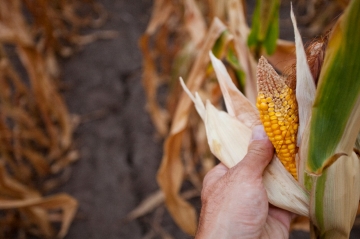Drought Resources

News Releases & Announcements
- USDA Designates 29 Tennessee Counties as Primary Natural Disaster Areas
- Tennessee Livestock Producers in 20 Counties May Be Eligible for 2023 Drought Disaster Assistance
USDA Farm Service Agency
Related Resources
Safeguard Livestock During Drought
During drought or extremely dry conditions, the state veterinarian advises livestock owners to take precautions to maintain the health of their animals. Pastures that would normally maintain livestock become brittle. Owners need to make sure livestock have access to quality forage and an abundant supply of fresh water. Depending on the animal and the environment, it may also be appropriate to give grain to livestock that typically do well on pasture alone.
- Ensure the water supply - When rainfall is in short supply, streams, ponds, and wells can run dry. Any water that remains may become unappealing. Supply free access to fresh water at all times.
- Watch for algae - Algae can take over a stagnant pond and is toxic to livestock. Aerate ponds or restrict access if algae bloom is extensive.
- Watch for poisonous plants - Weeds and toxic plants may be the only vegetation that survives in a dry pasture. Hungry livestock will often resort to eating those poisonous plants if no other roughage is available. Provide fresh hay and mow and maintain pastures to keep weeds under control.
- Consider changing the diet - All livestock need fresh water and salt. Add hay and/or grain to the diet during periods of dry weather when pastures lack moisture and nutrients.
- Monitor for nitrate accumulations - Weeds, grasses, and small grains can accumulate high levels of nitrate content during drought. Nitrate poisoning is possible with certain forages. Consult with your veterinarian or ag extension office for more information on risk and testing options.